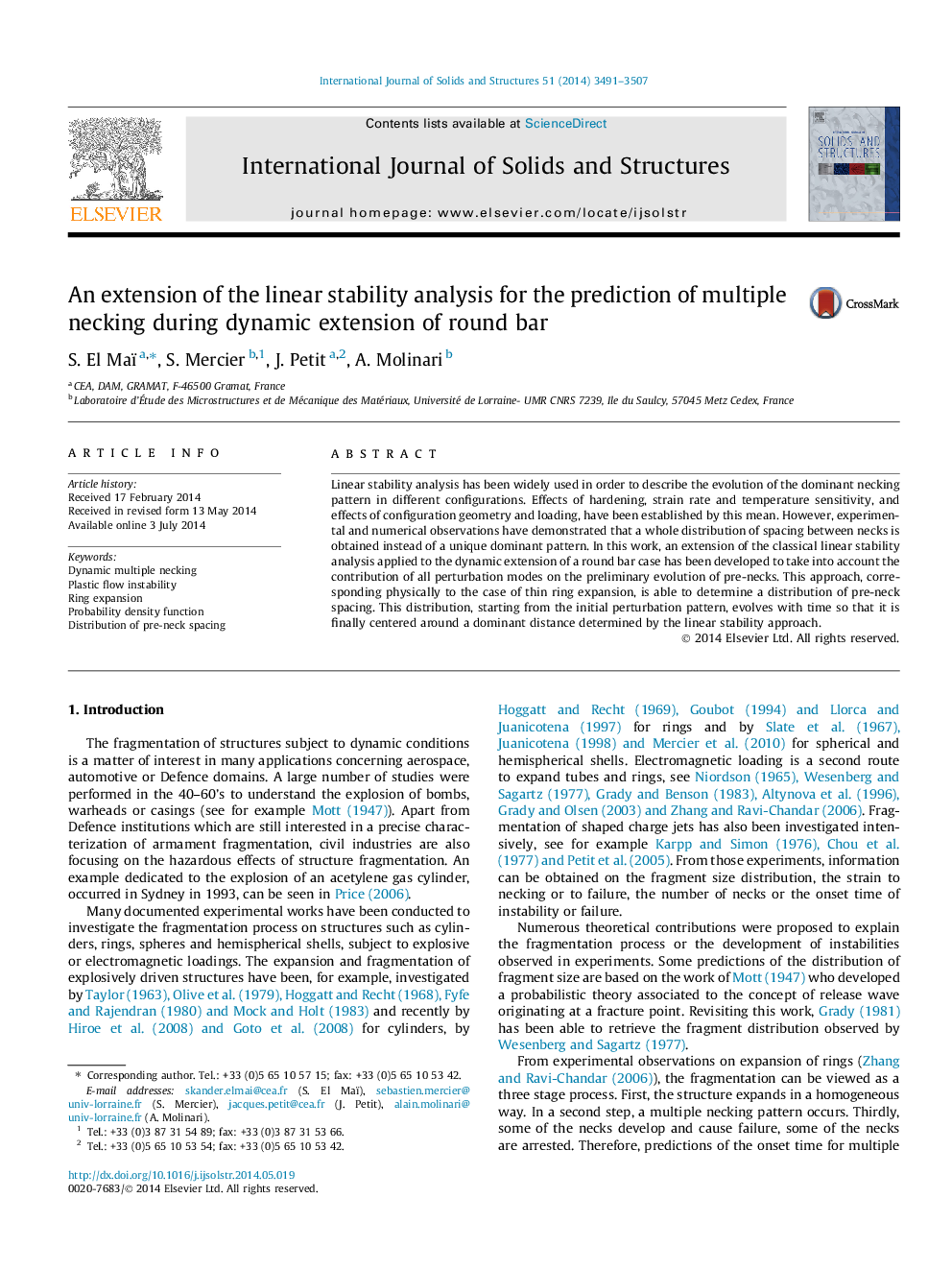| Article ID | Journal | Published Year | Pages | File Type |
|---|---|---|---|---|
| 6748976 | International Journal of Solids and Structures | 2014 | 17 Pages |
Abstract
Linear stability analysis has been widely used in order to describe the evolution of the dominant necking pattern in different configurations. Effects of hardening, strain rate and temperature sensitivity, and effects of configuration geometry and loading, have been established by this mean. However, experimental and numerical observations have demonstrated that a whole distribution of spacing between necks is obtained instead of a unique dominant pattern. In this work, an extension of the classical linear stability analysis applied to the dynamic extension of a round bar case has been developed to take into account the contribution of all perturbation modes on the preliminary evolution of pre-necks. This approach, corresponding physically to the case of thin ring expansion, is able to determine a distribution of pre-neck spacing. This distribution, starting from the initial perturbation pattern, evolves with time so that it is finally centered around a dominant distance determined by the linear stability approach.
Related Topics
Physical Sciences and Engineering
Engineering
Civil and Structural Engineering
Authors
S. El Maï, S. Mercier, J. Petit, A. Molinari,
